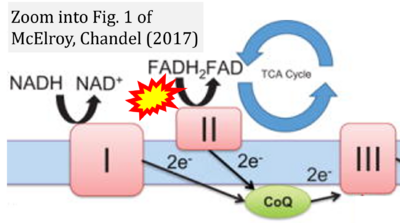McElroy 2017 Exp Cell Res
| McElroy GS, Chandel NS (2017) Mitochondria control acute and chronic responses to hypoxia. Exp Cell Res 356:217-22. https://doi.org/10.1016/j.yexcr.2017.03.034 |
McElroy GS, Chandel NS (2017) Exp Cell Res
Abstract: There are numerous mechanisms by which mammals respond to hypoxia. These include acute changes in pulmonary arterial tone due to smooth muscle cell contraction, acute increases in respiration triggered by the carotid body chemosensory cells, and chronic changes such as induction of red blood cell proliferation and angiogenesis by hypoxia inducible factor targets erythropoietin and vascular endothelial growth factor, respectively. Mitochondria account for the majority of oxygen consumption in the cell and have recently been appreciated to serve as signaling organelles required for the initiation or propagation of numerous homeostatic mechanisms. Mitochondria can influence cell signaling by production of reactive oxygen species and metabolites. Here we review recent evidence that mitochondrial signals can imitate acute and chronic hypoxia responses.
• Bioblast editor: Gnaiger E
Correction: FADH2 and Complex II
- FADH2 is shown as the substrate feeding electrons into Complex II (CII). This is wrong and requires correction - for details see Gnaiger (2024).
- Gnaiger E (2024) Complex II ambiguities ― FADH2 in the electron transfer system. J Biol Chem 300:105470. https://doi.org/10.1016/j.jbc.2023.105470 - »Bioblast link«
Labels:
Stress:Hypoxia
Enzyme: Complex II;succinate dehydrogenase


